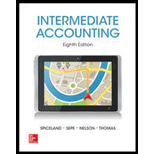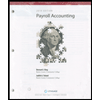
Projected benefit obligation (PBO): This is the estimated present value of future retirement benefits, accumulated based on the future compensation levels.
Plan assets: The assets which are used to satisfy the postretirement obligation are held as a pension fund by the trustee, to invest the employer contributions,
Funded status: The net difference of the total of projected benefit obligation (PBO) and pension plan assets are referred to as funded status. If the balance of PBO is more than plan assets, the difference is referred to as underfunded status, and reported as net pension liability on the
To Explain: How the funded status reported on the balance sheet.
Want to see the full answer?
Check out a sample textbook solution
Chapter 17 Solutions
INTERMEDIATE ACCOUNTING
- Can you help me solve this financial accounting question using the correct financial procedures?arrow_forwardTriton Apps is developing a new tablet software. The application costs $96,000 to develop and only $0.60 per unit to deliver to each tablet user. What will be the per-unit cost of the application if it sells 200 units? 2,000 units? 800,000 units?arrow_forwardGeneral Accountingarrow_forward
- Please provide the answer to this general accounting question using the right approach.arrow_forwardI am searching for the correct answer to this general accounting problem with proper accounting rules.arrow_forwardThe following figures are reported on the income statement of Brighton Co.: • Revenue: $50,000 • Cost of goods sold: $20,000 • Operating expenses: $22,000 • Net income: $8,000 What is the gross margin percentage? a) 60.0% b) 44.0% c) 40.0% d) 16.0%arrow_forward
- The petty cash administrator at Evergreen Business Solutions performed the weekly reconciliation. The fund was established at $950, with receipts showing staff refreshments $210, postage $145, and parking fees $265. When counting the remaining cash, only $275 was found. The manager asked to determine the discrepancy amount.arrow_forwardI am searching for a clear explanation of this financial accounting problem with valid methods.arrow_forwardWhat is the value of the office supplies that should appear on balance sheet?arrow_forward
 Intermediate Accounting: Reporting And AnalysisAccountingISBN:9781337788281Author:James M. Wahlen, Jefferson P. Jones, Donald PagachPublisher:Cengage Learning
Intermediate Accounting: Reporting And AnalysisAccountingISBN:9781337788281Author:James M. Wahlen, Jefferson P. Jones, Donald PagachPublisher:Cengage Learning Principles of Cost AccountingAccountingISBN:9781305087408Author:Edward J. Vanderbeck, Maria R. MitchellPublisher:Cengage Learning
Principles of Cost AccountingAccountingISBN:9781305087408Author:Edward J. Vanderbeck, Maria R. MitchellPublisher:Cengage Learning



